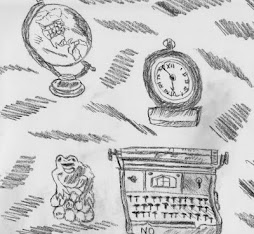Last year, my 1996 Honda Accord was experiencing cooling system problems. Whenever a person deals with cooling system issue, it is hard to pinpoint the exact problem. a vehicle is essentially like a human body. How do you know what part of the cooling system to fix. Mechanics are infamous for making unnecessary repairs.
The Honda kept overheating, making it a challenge to drive without worrying about breaking down. Ever since 2005, the car has experienced a series of cooling system problems: a bad radiator, blown radiator hose, corroded radiator cap, broken cooling fans, thermostat switch, thermostat, and heater hose. I will provide some details about my Honda's cooling system problems.
How did I figure out that I had vehicle cooling problem? Some signs are more obvious than others. While driving to Las Vegas, the Mojave Desert heat caused the radiator hose to burst. You will know when you blow a radiator hose. The noise will sound like a tire blowout, but the only difference is that the needle soars and the car begins to shake. Immediately after you hear a pop, pull over right away so the engine doesn't explode. I would recommend you to carry a radiator hose with some random tools.
If you blow out a radiator hose, you will need a tow. There is no possible way to drive. It is not worth the risk of damaging the engine. A radiator is affordable. You can pick one up at the dealership. Don't trust these second market stores because they gave me the wrong radiator horse.
Whenever water escapes from the radiator and boils in the reservoir, then you have a cooling problem. After doing some research on the Internet, I discovered that I needed a brand-new heater hose, which cost a bundle at the Honda dealership. The vehicle used to overheat so much that the heater hose ruptured. Bright green liquid oozed below the passenger side of vehicle - near the middle of the engine. Make sure that if you have any leaking going on underneath the car, and it's green fluid, take the car into a shop. More than likely you will need a heater hose. The part is cheap, but the labor is expensive.
The radiator cooling fans are made to last a certain amount of time. Pay attention to whether your temperature gauge spikes up. The cooling fans are supposed to keep the engine cool, but if they are not working properly or need changing, then you can determine this by popping the hood. Look to see whether the fan is spinning. The fan is supposed to come on once the engine starts to get warm. Fans are expensive parts. I had two fans changed last summer, each costing a combined $600 with labor.
The thermostat regulates the temperature, communicating with the fans turn on. Imagine the thermostat as a mechanism, like the one in our brain, which signals to adjust to a temperature and when to perspire; helps cool down the body. If the thermostat is failing to work properly, then it will relay a signal to turn on the cooling fans.
Despite the fact that I had the radiator changed out a few years before, the mechanic did mention that something is either wrong with the engine block or with the thermostat. Pay attention to whether the car overheats while in a fast food drive-thru or when you're at a traffic light. Either the thermostat is broke or there may be other secondary cooling problems.
The radiator and the engine produce a lot of heat. There are time when the radiator cap will go bad because it has to hold the boiling water from escaping the radiator itself. I found out that I had a bad cap last year when I drove up a hill; the car started to overheat and the needle spike to the red "H" section. Having a good radiator cap will keep water from spilling out. This is one part that you can buy at secondary auto stores. Going to a dealership repair store will cost you a small fortune.
Lastly, if any of these problems don't appear to be causing the overheating, then you should have your radiator checked for any leaks and cracks. Since the radiator is essential to keeping the engine cool, don't take any chances with using those radiator stop leak kits and liquids. A new radiator is well worth the investment.
Cooling system problems are confusing, but not impossible to repair. Look for the signs and symptoms of the vehicle, which will help you determine the source of the problem. It is better to find out now then to go on a trip and be stranded because of the cooling system. Drive safe and good luck cooling things down.
Wednesday, August 5, 2009
Subscribe to:
Post Comments (Atom)























No comments:
Post a Comment